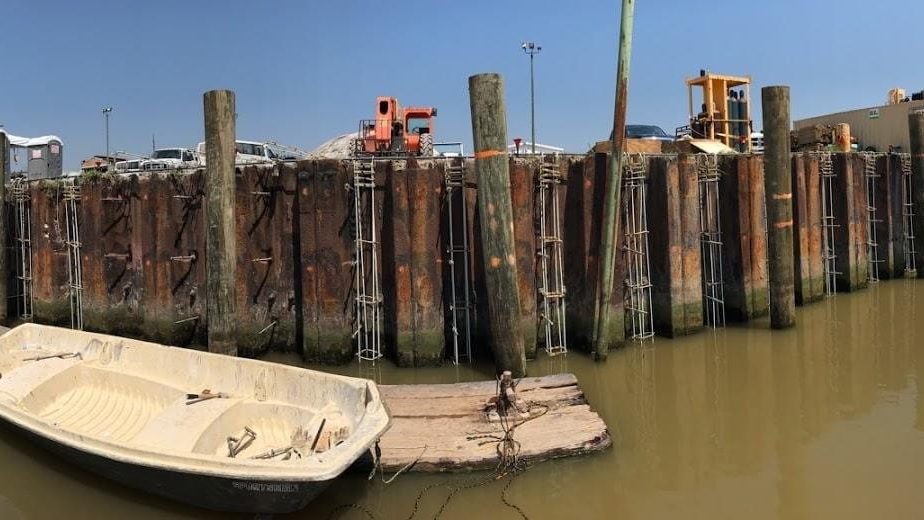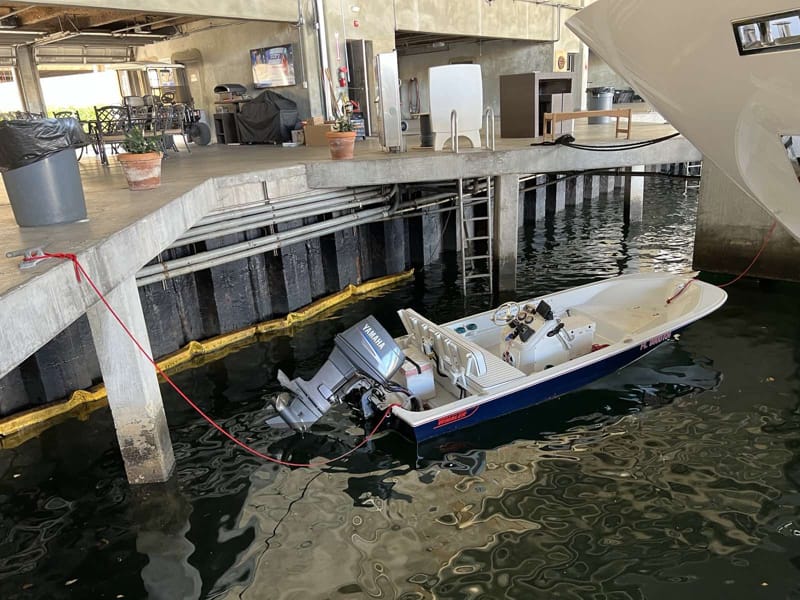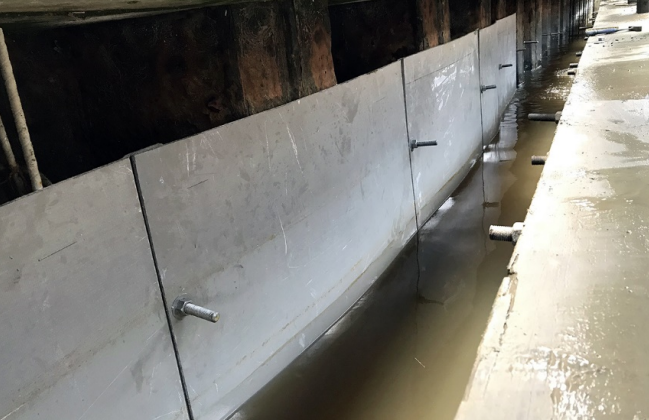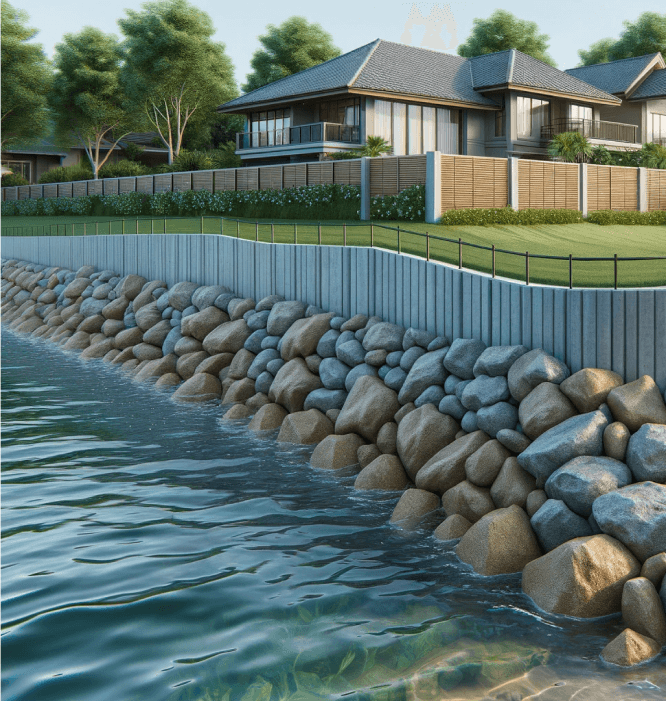A seawall is a coastal defense structure designed to protect areas of human habitation, conservation, and leisure activities from the action of tides, waves, or tsunamis. Seawalls are built parallel to the shore and aim to prevent further erosion of the shoreline. They come in various forms and can be constructed from a wide range of materials, such as concrete, steel, or masonry.

Why are seawalls important?
Seawalls play a crucial role in coastal defense by protecting against flooding, erosion, and storm surge. They fix the boundary between the sea and land, preventing further erosion and safeguarding human habitation, infrastructure, and natural habitats.
Seawalls have advantages such as their ability to withstand extreme water levels and their adaptability to sea level rise. They are designed to resist the force of waves and can provide a strong defense against coastal flooding. Additionally, they can be built to accommodate rising sea levels, making them a long-term solution for coastal protection.
However, seawalls also have some limitations, such as being poorly flexible structures, potentially interfering with natural processes like habitat migration, and causing downdrift erosion due to their perpendicular-to-shore placement.
Advantages of seawalls
Seawalls are crucial in coastal protection strategies, serving as a barrier between sea and land and effectively safeguarding against natural coastal challenges. Especially when constructed from robust materials like reinforced concrete, these structures offer numerous benefits:
- Prevents Erosion: They establish a fixed boundary, halting the progression of coastal erosion and shielding communities from its impacts.
- Long-term Solution: Compared to softer beach nourishment methods, seawalls provide a more durable, long-lasting defense.
- Lower Space Requirement: Compared to other coastal defenses like dikes, seawalls require less space, making them a more efficient option in certain situations
- Withstands Extreme Water Levels: Designed to endure high water levels, they effectively mitigate the risks of erosion and flooding.
- Comprehensive Coastal Defense: As a key element in coastal defense strategies, seawalls play a significant role in protecting coastal ecosystems and communities.
Disadvantages of seawalls
While seawalls provide essential coastal protection, it is important to consider the disadvantages of these structures.
- High Construction Costs: Building seawalls involves significant expenses due to the cost of materials and labor, making it a substantial investment.
- Impact on Coastal Processes: These structures can disrupt natural sediment transport, altering coastline dynamics and potentially causing increased erosion in adjacent areas.
- Lack of Adaptability to Climate Change: Seawalls may not be sufficiently adaptable to future scenarios like rising sea levels and increased frequency of storm events.
Types of seawalls
There are several types of seawalls used for coastal defense. These include timber, steel, concrete, sheet piles, and cobblestone seawalls. Each type of seawall has its unique characteristics and advantages in terms of durability, wave energy reflection, and cost. The choice of seawall type depends on factors such as the local climate, wave regime, and the desired level of protection.
Timber
Timber seawalls are commonly used in coastal areas, requiring regular maintenance to ensure their effectiveness and durability. These seawalls are constructed using vertically placed log piles covered with wood planks and sheets.
Timber seawalls offer a low-cost initial installation, making them an attractive option for coastal protection. However, they have height limitations for high-surf applications and are best suited for waterways with less intense wave action. To prevent rot, the timber used in the seawall must be treated with a preservative. Additionally, the installation of timber seawalls may be challenging if the ground is too hard.
While timber seawalls create a natural and aesthetically pleasing appearance, they may require more maintenance, especially in areas prone to severe erosion. The frequency of maintenance depends on environmental conditions, weather, and the type of materials used.

Steel
Steel seawalls are a widely used and durable coastal defense structure that provides effective protection against tides, waves, and erosion. Steel is considered the strongest material choice for seawall construction and can be easily installed into almost any substrate. It has no height limitations, allowing for flexible design options. However, steel sheet piling can be expensive to purchase and heavy to transport. To combat corrosion, a protective coating must be applied periodically for proper maintenance. Despite the initial installation costs and ongoing maintenance requirements, steel seawalls have a lifespan of more than 25 years.

Here is a visual representation of the advantages and disadvantages of steel seawalls compared to other construction materials:
| Advantages | Disadvantages |
| Strong and durable | Expensive to purchase |
| Flexible design options | Heavy to transport |
| Long lifespan | Requires periodic maintenance |
| Effective protection against tides, waves, and erosion | Susceptible to corrosion |
Steel seawalls are a viable option for coastal management, especially in areas prone to wave action and coastal flooding. However, the high cost and maintenance requirements should be considered, and alternative options such as beach nourishment should also be explored.
Concrete
Concrete seawalls are one of the most commonly used types of seawalls due to their durability and strength against tides, waves, and erosion. These seawalls are made of reinforced concrete, which makes them strong enough to withstand the impact of incoming waves.
The construction of concrete seawalls involves pouring and curing concrete to create a vertical wall that extends from the crest level to the foundation level. This vertical design helps to provide a high level of security against wave energy and prevents structural collapse.
Sheet Pile
are long structural sections with a vertical interlocking system that creates a continuous wall, often used to retain soil or water. They are commonly made from steel, vinyl (PVC), or composite materials such as FRP. The choice of material depends on factors like strength, environmental conditions, and cost.
We proudly use our product SPiRe+ for seawall and bulkhead repairs. It offers a maintenance-free service life with significant time and cost savings during installation. Made from high-strength, non-corroding Fiber Reinforced Polymer (FRP), SPiRe+ panels are 3-ft wide and come in lengths of 12-ft and 18-ft, with custom lengths available. They weigh 3.2 pounds per square foot and feature a flat face for bonding to concrete and protruding T profiles for interlocking, serving as a permanent, impervious barrier to protect the host structure.

Cobblestone
A cobblestone seawall is a type of coastal defense structure constructed using a combination of large rocks and boulders. This type of seawall is commonly used in areas with light to moderate wave action. The cobblestones are arranged in a way that creates a solid barrier against erosion processes in the coastal environment.
The use of large rocks and boulders provides stability and enhances the structural integrity of the seawall. Additionally, cobblestone seawalls have morphological characteristics that blend well with the coastal properties, making them aesthetically pleasing.
However, it is important to note that cobblestone seawalls may still experience some level of structural erosion over time. To mitigate this, regular maintenance and periodic beach replenishment may be necessary to ensure the effectiveness and longevity of the seawall.

Riprap
The use of riprap in seawall construction provides a reliable and effective method for protecting coastal areas against erosion and wave action. Riprap seawalls are made up of a combination of large and small boulders and chunks of concrete, creating a barrier that can dissipate the force of waves before reaching the soil behind the rocks.
Vinyl/Plastic
Vinyl/plastic seawalls are a type of coastal defense structure that is constructed using durable, pre-colored materials. They have gained popularity due to their aesthetic appeal, ease of installation, and lower cost compared to other materials. However, there are certain drawbacks to using vinyl/plastic seawalls that need to be considered.
Here are some key points about vinyl/plastic seawalls:
1. Lifespan: Vinyl/plastic seawalls have a longer lifespan compared to steel, lasting over 50 years in perfect conditions.
2. Aesthetics: The color of vinyl/plastic seawalls can be chosen, allowing for a visually pleasing appearance.
3. Limitations: Vinyl/plastic seawalls have height limitations and cannot be driven into hard surfaces.
4. Vulnerability to Harsh Conditions: Single corrugated vinyl sheet piling used in seawall construction may not be strong enough to withstand harsh winters, especially ice push.
Despite their advantages, vinyl/plastic seawalls have certain limitations and vulnerabilities that need to be considered.
Now, let’s explore how seawalls work to protect coastal areas.
Looking for Help with your Project?
Schedule a Call
Get free advice for any upcoming projects or repairs
See Specs and Sample Designs
Get full specs and details to plan out your next project
How do seawalls work?
Seawalls work by reflecting incident wave energy into the sea, thereby reducing the energy available to cause erosion.
There are three main types of seawalls: vertical, curved, and mound. Each type has its advantages and disadvantages in terms of wave energy reflection, erosion prevention, and cost.
Vertical Seawall
When considering the functionality of seawalls, one important type to examine is the vertical seawall. This type of seawall is characterized by its vertical design, which allows it to effectively deflect wave energy away from the coast. Here are four key points to understand about vertical seawalls:
1. Wave Energy Reflection: Vertical seawalls reflect wave energy back into the ocean, preventing it from reaching the land. This helps to protect coastal areas from erosion and flooding.
2. Coastal Ecosystems: However, the vertical design of these seawalls can be detrimental to coastal ecosystems. The reflected waves can cause scouring at the base of the seawall, disrupting natural sediment transport processes and affecting the availability of sediment for nearby beaches.
3. Steep Beaches: Vertical seawalls are particularly useful in protecting steep beaches, where the direct impact of heavy waves can cause significant erosion. They provide a physical barrier that helps to stabilize the shoreline.
4. Tsunami Wave Heights: Vertical seawalls can also play a role in mitigating the impact of tsunamis. By reflecting and dissipating the incident wave energy, they can help to reduce the height of tsunami waves, providing some level of protection to coastal communities.
Curved Seawall
As a key type of seawall, the curved seawall is designed to redirect wave energy and provide enhanced protection to coastal areas. Unlike vertical seawalls, which reflect waves directly back into the body of water, curved seawalls aim to re-direct most of the incident energy, resulting in low reflected waves and much-reduced turbulence. This design not only prevents waves from overtopping the wall but also provides extra protection for the toe of the wall.
However, the engineering and design process for curved seawalls is more complex compared to vertical seawalls. Additionally, the deflected waves can scour material at the base of the wall, causing them to become undermined. Despite these challenges, curved seawalls are effective in mitigating the impacts of major storms, promoting the exchange of sediment, and providing habitat for coastal organisms.
Mound Seawall
The effectiveness of curved seawalls in mitigating the impacts of major storms and promoting sediment exchange has led to the development of another type of seawall known as the mound seawall. Mound seawalls are designed to provide coastal protection while also allowing for the exchange of sediment between the land and sea.
Here is how mound seawalls work:
1. Mound shape: Mound seawalls are constructed in a curved shape, which helps to redirect incoming wave energy and reduce its impact on the coast. This shape allows for the dissipation of wave energy, reducing the risk of erosion.
2. Sediment retention: Mound seawalls are designed to retain sediment behind them, preventing it from being washed away by waves. This helps to maintain the stability of the coast and prevent downdrift erosion.
3. Overtopping control: Mound seawalls are designed to have acceptable overtopping rates, meaning they can handle a certain amount of water flowing over the top without causing damage. This helps to protect the land behind the seawall from flooding.
4. Recreational space: Mound seawalls can also provide recreational space for coastal communities. The curved shape and sloping design make them suitable for activities such as walking, cycling, and enjoying the coastal views.
Frequently Asked Questions
Seawalls can impact coastal ecosystems by affecting the natural balance of the environment. They can alter the flow of water, which can lead to changes in the distribution of plants and animals in the area. Additionally, seawalls can disrupt the natural processes that occur in coastal areas, such as the movement of sediments and the exchange of nutrients between the land and the sea.
Alternative coastal protection methods include beach replenishment, dune restoration, living shorelines, and offshore breakwaters. These approaches aim to maintain natural coastal processes, enhance ecosystem resilience, and provide effective protection against erosion and flooding while minimizing negative impacts on the environment.
The potential long-term effects of seawall construction include increased erosion in adjacent areas, disruption of natural sediment transport processes, loss of intertidal habitats, and limited future coastal management options. These impacts should be carefully considered in decision-making processes.
Natural barriers, such as mangroves and coral reefs, offer a more cost-effective and ecologically sustainable alternative to seawalls. They provide natural protection against tsunamis, floods, and erosion while preserving coastal ecosystems and reducing the need for expensive construction and maintenance.
The main factors that determine the cost of seawall construction include the design height, anticipated wave loadings, selected seawall design, construction materials, proximity to raw materials, availability of human resources, and ongoing maintenance expenses.
